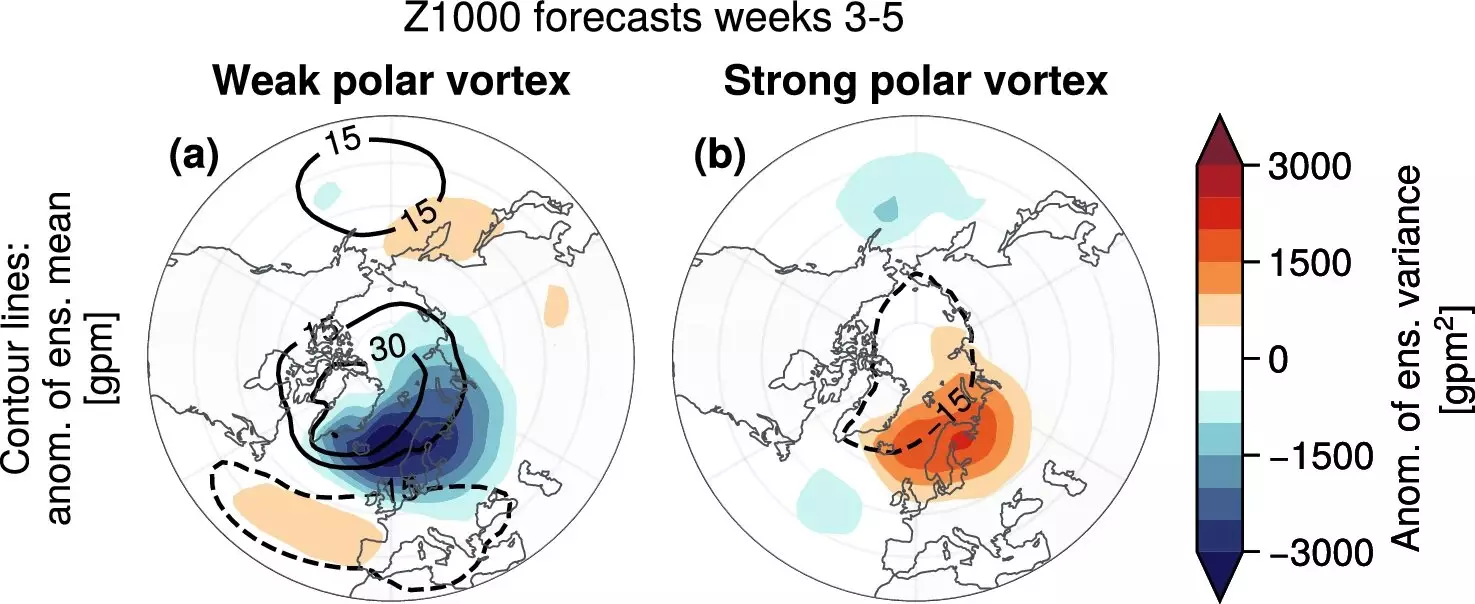Long-range weather forecasting has always been a challenging task due to the chaotic nature of weather systems. However, researchers at LMU have made an interesting discovery regarding events in the stratosphere that can make forecasting weather conditions in Northern Europe easier. This breakthrough could have significant implications for various sectors such as agriculture, energy, and public health.
The accuracy of long-range weather forecasts is crucial for farmers who rely on these predictions to determine the best times for sowing and harvesting their crops. Energy providers use these forecasts to anticipate fluctuations in renewable energy production, while public health officials use them to prepare for disease outbreaks that are correlated with specific weather conditions. The research conducted at LMU sheds light on how events in the stratosphere can influence weather patterns over Northern Europe, leading to more accurate long-range forecasts.
The Role of the Polar Vortex
One of the key findings of the study is the relationship between the state of the polar vortex in the stratosphere and long-range weather forecasts. When the polar vortex weakens or breaks down during the Northern winter, the North Atlantic jetstream tends to shift southward, increasing the likelihood of cold spells over Eurasia. These vortex breakdowns are rare events that occur approximately every other winter. However, the researchers at LMU have observed one such event currently unfolding, with expected impacts on Eurasian weather in the coming weeks.
The study published in Communications Earth & Environment highlights another aspect of stratospheric influence on long-range weather forecasts. Weak polar vortex states, like the one observed currently, are followed by reduced uncertainty in 3-5 week forecasts over Northern Europe. Ensembles of forecasts show a narrower range of possible weather conditions, with a decrease in forecast uncertainty by about 25%. This reduced uncertainty is attributed to the southward shift of the North Atlantic jetstream, leading to less storm activity and more predictable weather over Northern Europe. However, forecast uncertainty increases over Southern Europe as a result.
The research conducted by LMU meteorologists has provided valuable insights into the link between stratospheric events and long-range weather forecasting in Northern Europe. By studying phenomena like the polar vortex and its impact on the North Atlantic jetstream, researchers have been able to improve the accuracy of long-range weather forecasts. This breakthrough could have significant implications for various sectors that rely on these forecasts for decision-making. Further research in this area could lead to even more precise and reliable long-range weather predictions.


Leave a Reply